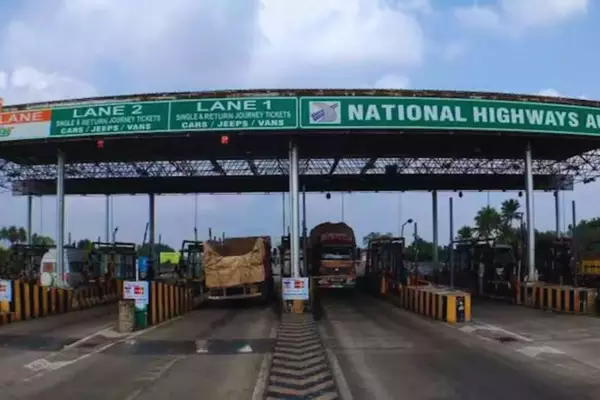The Ministry of Road Transport and Highways has recently notified the National Highways Fee (Determination of Rates and Collection) Amendment Rules, 2024.
- This amendment introduces a new GNSS-based electronic toll collection (ETC) system, aimed at modernizing toll collection and enhancing user experience.
Overview of the Amendment Rules
- Purpose: To update the National Highways Fee (Determination of Rates and Collection) Rules, 2008, incorporating GNSS-based toll collection.
- Legislative Framework: Amended in accordance with the National Highways Act, 1956.
Key Provisions:
- Toll-Free Travel: Mechanical vehicles equipped with GNSS On-Board Units (OBUs) are exempt from toll fees for up to 20 km of travel per direction per day, excluding National Permit vehicles.
- Exclusive GNSS Lanes: Special lanes at fee plazas for GNSS-equipped vehicles. Non-GNSS vehicles entering these lanes will be charged double the standard toll fee.
- Future Transition: GNSS-based ETC is planned to eventually replace the FASTag system for toll collection.
GNSS-Based Electronic Toll Collection (ETC) System:
- Functionality: Utilizes satellite-based imaging to track vehicle positions and calculate tolls based on the distance travelled.
Main Components:
- On-Board Unit (OBU): GNSS-enabled device installed in the vehicle to determine the route and calculate the toll.
- Automatic Number Plate Recognition (ANPR) Cameras: Positioned on highways to capture vehicle number plates and deduct the appropriate toll.
Benefits:
- Infrastructure Reduction: Less need for roadside toll booths.
- Reduced Congestion: Enhances traffic flow by minimizing stops and delays at toll plazas.
Comparative Analysis: GNSS-Based ETC vs. FASTag
- Technology:
- GNSS-Based ETC: Utilizes satellite-based imaging and Automatic Number Plate Recognition (ANPR) technology to track vehicle position and calculate tolls based on distance travelled.
- FASTag: Employs Radio Frequency Identification (RFID) technology to facilitate toll payment, with tolls being fixed rates.
- Equipment Required:
- GNSS-Based ETC: Requires an On-Board Unit (OBU) equipped with GNSS connectivity to monitor and report the vehicle’s route and distance.
- FASTag: Requires an RFID tag affixed to the vehicle’s windscreen for toll payment.
- Toll Calculation:
- GNSS-Based ETC: Calculates tolls based on real-time vehicle movement data, providing distance-based tolling where users pay according to the actual distance travelled.
- FASTag: Calculates tolls based on fixed rates, regardless of the distance travelled on the highway.
Ref: Source
| UPSC IAS Preparation Resources | |
| Current Affairs Analysis | Topperspedia |
| GS Shots | Simply Explained |
| Daily Flash Cards | Daily Quiz |
Frequently Asked Question:
What is the purpose of the National Highways Fee Amendment Rules, 2024?
The purpose is to introduce GNSS-based electronic toll collection, updating the 2008 toll collection rules for highways.
What is GNSS-based toll collection?
GNSS-based toll collection uses satellite imaging and ANPR cameras to track vehicle positions and calculate tolls based on distance travelled.
What toll exemption is provided under the new rules?
Vehicles with GNSS On-Board Units are exempt from toll fees for up to 20 km of travel per direction per day, excluding National Permit vehicles.
What happens if non-GNSS vehicles enter GNSS-exclusive lanes?
Non-GNSS vehicles using GNSS lanes will be charged double the standard toll fee.
How does GNSS-based toll collection differ from FASTag?
GNSS-based toll collection calculates tolls based on distance travelled, while FASTag charges fixed toll rates regardless of distance.



